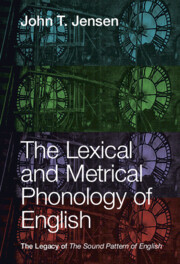This co-authored chapter traces the development of generative and other formal approaches to phonology from 1960-2000. After discussing empiricism, positivism, and logical positivism, Prague Circle functional phonology (Jakobson, Trubetzkoy 1939) and American phonology (Harris 1950s), it turns to Generative Phonology, launched by Chomsky and Halle (Sound Pattern of English, SPE 1968), with its algorithmic mentalism: explicit formulation; formal simplicity used to choose between analyses; derivational rules (from underlying to surface form); no phonemic ‘contrast’; ‘abstract’ (non-occurring) segments can ‘trigger’ a rule.
From the 1960s to the end of the century, there were serious criticisms of SPE and debates about a series of new approaches: ‘concrete’ Natural Generative and Natural Phonology; Lexical Phonology; and, with the integration of the syllable, Autosegmental and Metrical Phonology. The late 1980s and 1990s brought (rule) ‘conspiracies’ and ‘harmonic phonology,’ which ultimately led to Optimality Theory (OT), in which an algorithm selects a surface representation that satisfies a set of ranked (universal) constraints. In 2000+, OT was the most popular formal approach.
Other approaches studied the relationship of phonetics and phonology, linked phonology and psychological experimentation, variation in phonology, and so forth.
